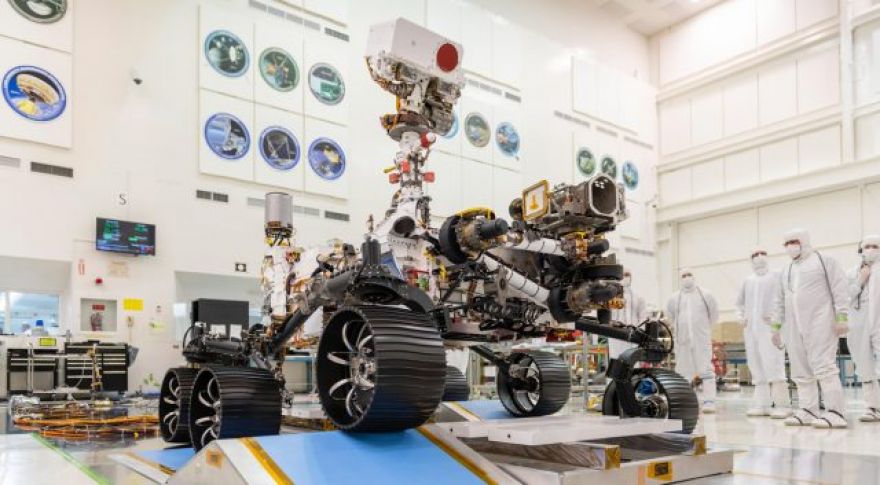
NASA Clears Perseverance Mars Rover for Thursday Launch
NASA has that the Perseverance rover will launch on Thursday (July 30th) this week after years of development and testing. The robotic explorer, which is already bundled up in the nose section of an Atlas V rocket, will study the history of Mars with a specific focus on the search for signs of life on the dusty rock. First, it has to get there.
Currently, NASA plans to launch the mission at 7:50 AM (eastern time) on Thursday from Cape Canaveral. This is always a dangerous phase of any mission, but the Atlas V has an excellent success rate for heavy-lift rockets.
Getting into space is just the first hurdle for Perseverance to clear before it can do some science. It will take seven months for the Centaur second stage to carry the payload to Mars. NASA has already chosen a landing date: February 18, 2021. NASA will wait to begin the landing even if Perseverance arrives before that date, which allows flight engineers to plan for specific lighting and surface conditions.
The rover sealed inside the launch fairing.
Because Mars is several light minutes away from Earth, there’s no way for the team back home to control the descent in real-time. So, everything will be automated, just like Curiosity. That means a new “seven minutes of terror” as we wait to find out if the rover landed successfully. Perseverance is a delicate piece of scientific equipment that weighs as much as a small SUV, and Mars’ thin atmosphere means parachutes are of limited usefulness. NASA’s solution is the same as it was eight years ago. Perseverance will use a parachute to slow its descent, but it will jettison that far above the surface. A rocket-powered sky crane will bring the lander to a stop just above the surface, deposit Perseverance, and then blast itself off into the distance to crash-land.
Jezero Crater, the landing site for Perseverance.
If all goes as planned, Perseverance’s all-clear signal from Jezero Crater will reach Earth seven minutes after the landing began. While on Mars, Perseverance will deploy a helicopter drone, collect samples for a possible return to Earth, and conduct astrobiology research. NASA designed the rover to operate for at least several years, but it’s based on Curiosity’s highly successful design — and that robot is still climbing Mount Sharp eight years after its landing. Perseverance could be exploring the red planet for many years to come.
Now read: